3 ways HR can improve employee experience through benefits education
Human Resources (HR) leaders are pivotal in ensuring employees understand and optimize their benefits. Benefits can be a make-it-or-break-it part of the compensation package, yet often, few resources are dedicated to helping employees fully take advantage of all available. A recent study found that 76% of workers who understood their benefits were happy, and 82% said their benefits gave them greater stability. Yet, 49% of employees don’t understand their benefits.
When one or more of an employee’s three major life areas (health, wealth, and relationships) is impacted, it can affect how they show up at work.
Below are a few areas where HR can focus its educational efforts to improve the employee experience and alleviate burdens in these three major life areas.
- Cost-saving tools for medical expenses
One area that interests employees is saving money or helping them reduce their medical expenses. Most recently, 1 in 5 Americans have not gotten treatment due to cost, even though they have insurance. Affordability is a big concern, with 59% of Americans worried about paying their medical bills in 2024. It goes far beyond health plan access. It’s affording the necessary treatment that comes up during the year.
Healthcare costs are one of the most confusing aspects of a benefits program for employees to navigate. As of 2024, employers are now required to provide online tools that give employees access to transparent pricing on out-of-pocket expenses for medical treatments. Employers who don’t offer these tools are liable for up to $100 per day per employee and their dependents.
TALON’s MyMedicalShopper tool allows employees to shop for value-based care to understand the options and the exact cost they can anticipate for each treatment. In addition, the MyRewardsShopper tool will enable employers to reward employees for shopping for care, giving them a percentage of the savings as cash back.
“Employees as patients deserve to know the costs of a procedure and how much those costs vary between in-network providers. About 25% of adults have avoided care in the last year due to cost or the fear of the burden that would be placed upon them when receiving medical care. At TALON, we’ve consistently found that prices can vary by 10-20x, and in many cases, quality does not correlate to those costs as they do in other consumer-facing markets. Beyond educating employees about the radical price variation that exists between in-network providers, it’s critically important to align financial incentives between employer and employee and allow the employee to share in the savings generated through their smart healthcare consumerism with dollars back into their pocket, whether that be into an HSA, HRA, or as a debit card. I’ve spoken with our users on the platform, and it’s not that they’re unwilling to pay for services; they want to feel confident that they’re receiving commensurate value for the services they receive.”
- Tools and resources to navigate parenting challenges
One of the most significant areas in which employees often carry a large burden is parenting, from taking leave, accessing and affording childcare, and navigating daily parenting challenges. Many employers have stepped up to help their employees balance their role as parents with other responsibilities in their everyday lives. Here are a few companies that are tackling this head-on with creative solutions:
- Salesforce offers expanded family care leave and provides access to parental coaching.
- Atlassian partners with Bright Horizon’s Back-Up Care, giving employees access to backup care for their children, adults, and elderly family members.
- TransUnion offers flexible schedules, remote work, discounts on daycare up to 10 days of back-up care through Care.com, and tutoring for children.
- Creating opportunities for employees to build wealth
Many employers have started to offer Employee Stock Ownership Plans (ESOPs), meaning employees have an ownership interest in their company in the form of stock shares. Employees can experience tax benefits from these plans and build long-term wealth.
Jim Bonham, President and CEO of The ESOP Association, told CNBC, “Globally, the concept of employee ownership as a response to wealth and income inequality is reverberating across economies.”.
ESOPs provide an opportunity for wealth distribution within the company and more job security, which boosts employee commitment and engagement.
Measuring Impact and Adjusting Strategies
Lastly, HR leaders should continuously evaluate the effectiveness of their initiatives by collecting feedback and analyzing data on employee participation rates and satisfaction levels. This feedback loop enables HR teams to identify areas for improvement and adjust strategies accordingly to meet the workforce’s evolving needs better.
By leveraging data analytics and employee feedback, HR leaders can refine benefit offerings, rewards programs, and wellness incentives to maximize their impact on employee engagement, satisfaction, and overall organizational performance.
